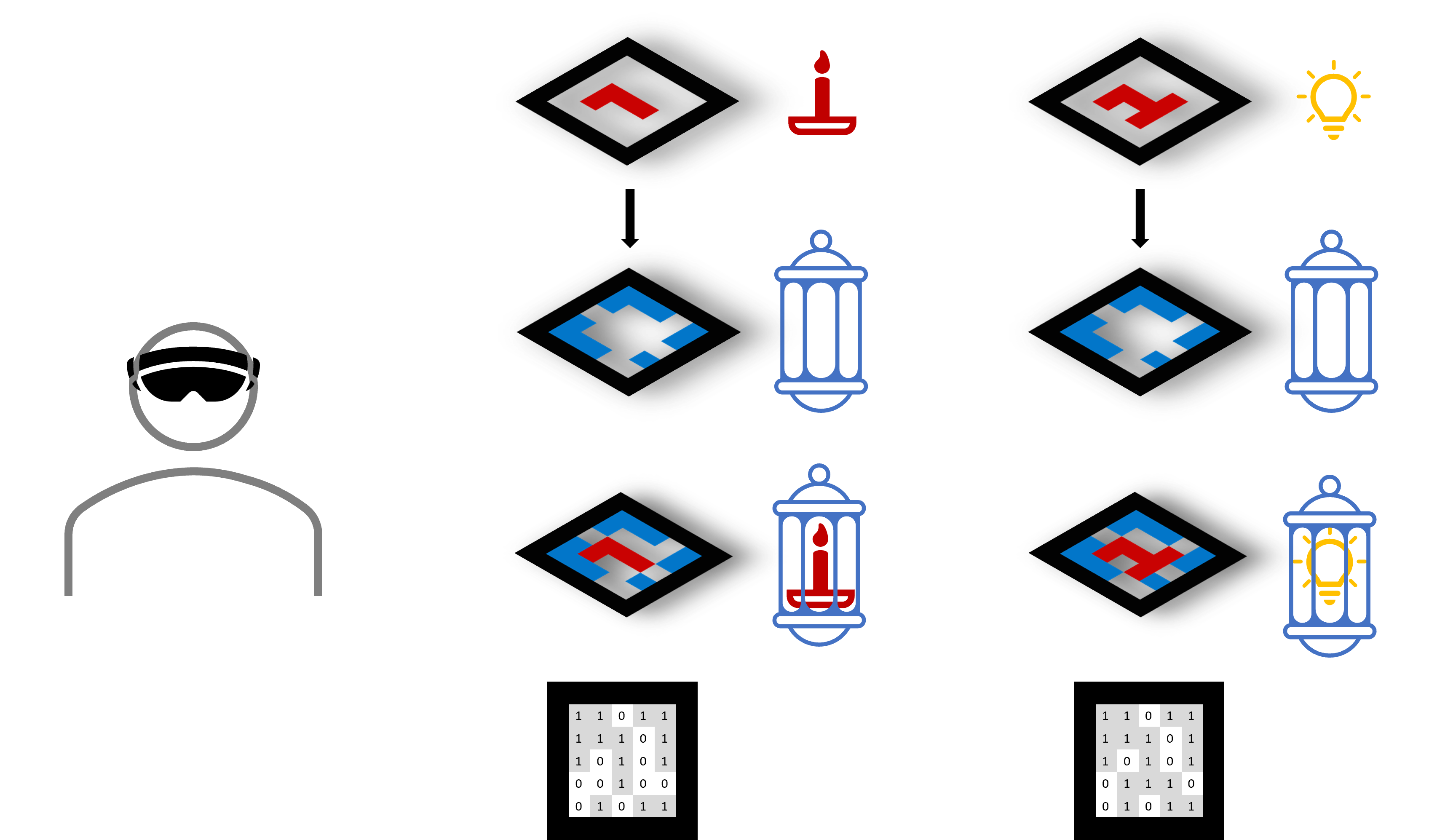Custom Marker Creator
What is it?
The Custom Marker Creator is a tool designed to assist designers in creating a customized ArUco dictionary. ArUco markers are widely used in conjunction with OpenCV in the field of augmented reality (AR). These markers are square-shaped, black and white, and can be easily recognized by a camera. The output generated by this tool can be utilized in various applications, including web-based AR projects using JavaScript and Unity-based OpenCV projects.
Why choose a custom library instead of the standard one?
Traditionally, AR markers are treated as static tokens that remain unchanged once they are printed or created. The focus of AR applications typically lies in the presentation of digital content, such as 3D models, text, animations, and audio. However, recent interest has emerged among scholars in exploring the potential of interacting with the AR markers themselves.
This project is motivated by the possibilities offered by the concept of stacking mechanics. What if the markers were printed on transparent films and could be stacked together to form new patterns? This opens up intriguing avenues for experimentation and innovation in the field of AR.
Below is an illustration of the stacking marker mechanics. When two or multiple markers are stacked on top of each other, the new pattern combines all the visible dots from each componential pattern.

What is transparent film?
A transparent film refers to a thin sheet or layer of material that allows light to pass through it without significant distortion or obstruction. It is typically see-through or translucent, enabling objects or images placed behind or on the film to remain visible.
Transparent films can be made from various materials, such as plastic (e.g., polyester, polyethylene, polypropylene), glass, or even certain types of paper. These films are designed to have optical clarity, ensuring minimal interference with the transmitted or reflected light.
What if the patterns overlap with each other?
To simplify the process and avoid complexities arising from (semi-)overlapping patterns, it is recommended to refrain from using repetitive designs when creating each pattern. In addition, we have introduced the concepts of layers and rings.
Layers: Layers are defined as sets of markers that should not be stacked on top of each other. Only markers from different layers can be stacked together. It is possible to assign a distinct color to each layer.
Rings: Rings define specific regions within the marker space, as illustrated below.
When each layer occupies its own designated ring space, the patterns within each layer will not overlap with patterns from other layers. This design concept was inspired by the work referenced as [1].
[1] Joao Marcelo Xavier Natario Teixeira, Alexandre de Queiroz Burle, Arthur de Andrade Almeida, Thiago Buarque de Gusmao Lafayette, Vinicius Lima Ventura, Vitor Mendes Carvalho, and Veronica Teichrieb. 2022. Towards Transparent Markers. In Symposium on Virtual and Augmented Reality (SVR'21). Association for Computing Machinery, New York, NY, USA, 74–83. https://doi.org/10.1145/3488162.3488212